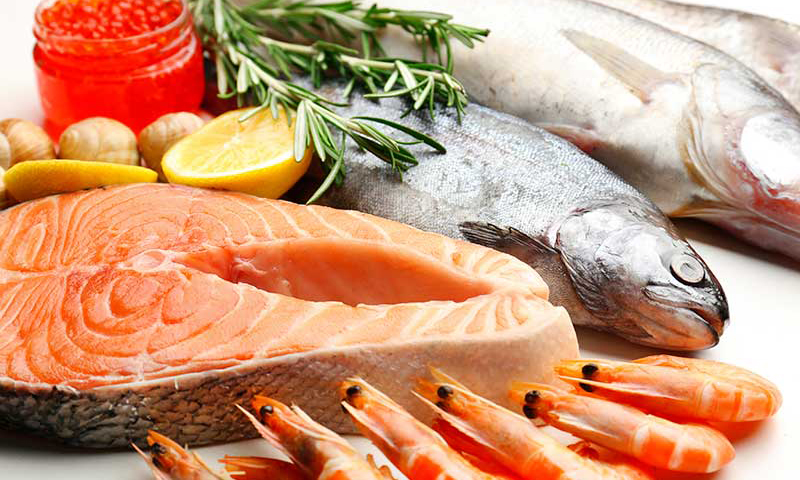To document the changing nature of the marketplace, IRI, Anne-Marie Roerink of 210 Analytics and Marriner Marketing have teamed up to continue to bring the latest trends and analysis relative to seafood department sales. This is the fourth in a series of reports presented by IRI, discussing inflation trends.
Fresh seafood prices per unit were up an average of 12.1 percent in March 2022 versus year ago, even more than the 10.9 percent rise in February. Finfish reached an average of $9.81 per unit, up 18.1 percent. Price increases were lowest in fresh shellfish, at 2.1 percent on a per unit basis. This compressed dollar growth, as seen later.
Seafood prices may spike further amid Russian sanctions, with particular impact on crab, cod and Alaskan pollock prices, the latter used in frozen fish sticks and fast-food sandwiches. According to the U.N. Food and Agricultural Organization, Russia is the fifth-largest producer of wild-caught fish and the world leader in cod exports.
Frozen seafood dollar sales were significantly higher than fresh seafood in March 2022, at $605 million versus $505 million, respectively. This was due to a 10.4 percent decline for fresh seafood when comparing March 2022 dollar sales to year ago levels. In contrast, frozen seafood dollars grew 1.1 percent and shelf-stable (canned and pouches) increased 9.9 percent, along with increases in unit and volume sales.
Ambient seafood
Shelf-stable seafood sales have been a rollercoaster ride for the last two years. During March 2020, sales increased by triple digits, for an average increase of 39 percent over the first quarter of 2020. That proved to be impossible to lap come the first quarter of 2021, and sales dropped by 23.5 percent. However, come March 2022, sales are once more trending in positive territory.
During the four March 2022 weeks, ambient seafood in cans and pouches reached $222 million in sales, which was up from $200 million in February. It was also a significant year-on-year increase of 9.2 percent, hand-in-hand with unit and volume increases. The bulk of sales were generated by tuna.
Fresh seafood
During the four March weeks, dollar sales for fresh seafood reached $505 million, down from $520 million in February. Year-on-year, fresh seafood sales declined 10.4 percent, but sales remained above 2020 levels by 4.3 percent.
Fresh seafood sales have been a rollercoaster ride ever since the second quarter of 2020. Growth levels have been in a downward pattern these past few months. Year-on-year seafood sales gains went negative in January 2022 and dropped to 12 percent in February and 10.4 percent in March.
Fresh shellfish had the deeper declines, which is also related to the much lower levels of inflation than seen in finfish.
Despite the start of Lent 2022 on March 2, fresh seafood sales show a slowing down instead of gearing up from the first to the fourth week of March. The week ending March 6 was the biggest, at $136 million – nearly 16 million more than the final March week, at $120 million. This translates into year-on-year decreases for each of the weeks.
Assortment and inventory seemed to be one of the culprits. Departments across the store are dealing with out-of-stocks and SKU reduction amid significant supply chain disruption and constraints. In fresh seafood, shellfish assortment was down 8.6 percent from last year’s March levels. The average number of items for finfish were down 3.6 percent. This means a smaller number of items need to work harder to achieve the same level of sales.
Frozen seafood sales
Building onto several years of growth, frozen food sales continued to increase in March 2022. Dollar sales gained 5.7 percent over year ago and trended 28.5 percent above the 2019 pre-pandemic levels. However, like most other areas of the store, frozen food sales could not match prior year unit levels, which were down 6 percent.
Frozen meals and frozen animal protein were the largest areas within the frozen department. While frozen seafood remained the biggest seller within animal protein, its dollar sales were down year-on-year. Additionally, frozen seafood had more unit pressure than the other areas, including frozen meat, processed poultry and poultry.
Frozen processed poultry had the best performance of the various animal protein areas.
For more information, visit iriworldwide.com.
To read the meat report from IRI presented by The Shelby Report, click here.
To read the dairy, deli and bakery report from IRI presented by The Shelby Report, click here.
To read the frozen foods report from IRI presented by The Shelby Report, click here.

